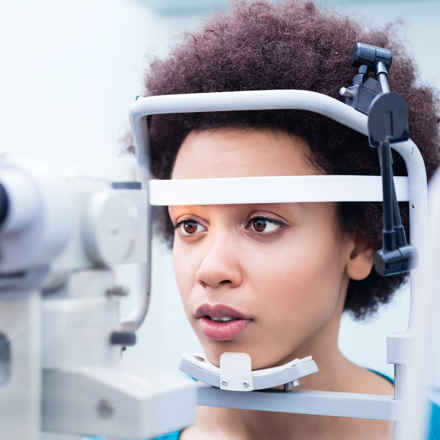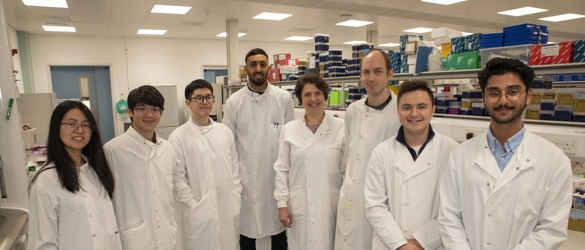Developing artificial intelligence to predict AMD

Professor Andrew Lotery, University of Southampton- £249,659 (co-funded with Roche)
Age-related macular degeneration (AMD) can lead to sight loss, but its progression varies widely between individuals. Using advanced imaging and artificial intelligence (AI), researchers are working to understand and uncover clues that could help predict who is most at risk of sight loss.
What’s the problem?
AMD progresses through several stages before causing sight loss. As we know, late AMD can be categorised into two forms: wet AMD and dry AMD (also called geographic atrophy).
Wet AMD can develop very suddenly over the course of a few weeks or months. Dry AMD, on the other hand, is the slow deterioration of the cells of the macula, often over many years, as the retinal cells die off and are not renewed.
Unfortunately, doctors don’t know who will progress to the late, sight-threatening stages of the disease. Some patients progress slowly or not at all and others quickly. An ongoing trial, run by Professor Andrew Lotery and his team at the University of Southampton, aims to understand why this is.
Project background
The PINNACLE study began in 2019 with the aim of using machine Learning, a branch of AI technology, to discover new features and markers of retinal ageing that can be used to predict how a person’s AMD will progress.
This study was split into two parts, with the first part recruiting over 400 patients with intermediate AMD, who were followed very carefully over three years. Throughout this time, detailed retinal images were taken to see which layers of their macula changed first. These images were collected to help determine if it was the blood vessels or light-sensing cells that age first, and in turn, lead to the late sight-threatening stages of AMD.
In the second part of the PINNACLE study, the research team taught computers to analyse high-resolution images of the macula. With access to hundreds of thousands of such images from patients with and without AMD, the team was able to train computer software to identify what structural changes occur with AMD. As a result, these computers could be used to identify changes in the eye that have not previously been considered.
The team aims to see if these new “biomarkers” that the computers have identified will help them predict how patient eye health progresses. They believe they will be able to better predict which patients will progress to the sight-threatening late stage. This could help future researchers investigate better treatments and determine the most appropriate patients for recruitment into clinical trials.
Ongoing research
As PINNACLE came to an end, the study team could see that following the participants for a longer time would yield more information on the progression of AMD. Therefore, the Macular Society has agreed to fund an extension, called SUMMIT, together with the pharmaceutical company Roche.
The researchers will leverage all their previous work in the PINNACLE study by monitoring the eye health of these patients for a further two years. This will greatly enhance the knowledge of what happens to people with intermediate AMD and what causes them to progress to the sight-threatening forms of the disease.
See our other projects
Since 1987 the Macular Society has invested around £10 million in over 100 research projects.
Explore more research
Beating macular disease through funding medical research and improving the lives of those living with macular disease.




